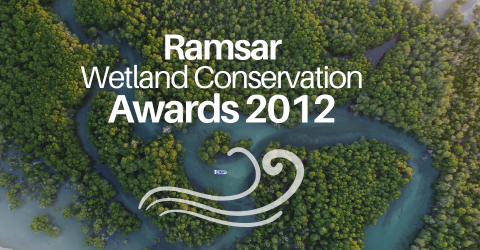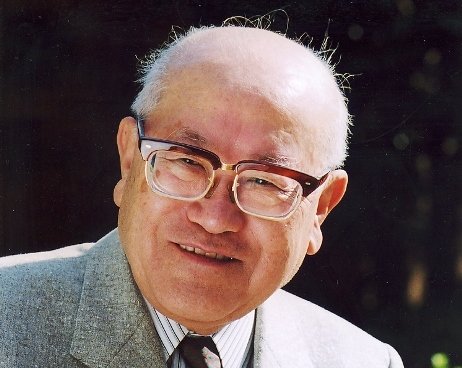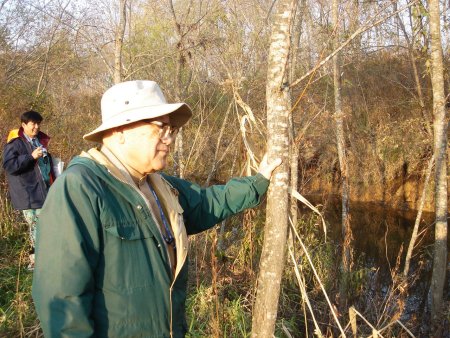
Award for Science 2012

Professor Tatsuichi Tsujii, Japan
Prof. Tatsuichi Tsujii is being awarded the Science Ramsar prize for his lifetime contribution to wetland science and conservation, in Japan and internationally. For 50 years, Prof. Tsujii has played a leading role in wetland conservation in Japan, notably in the restoration and management of the famous Kushiro-shitsugen Ramsar Site and World Heritage Site in Hokkaido, as well as in the designation of some 20 other Ramsar Sites in Japan. He has played an important role in raising awareness of wetlands and their values in Japan, at political and public level. In addition to his academic career, Prof. Tsujii has held many high-level positions in governmental, non-governmental, and scientific governance bodies, an example being his chairmanship of the of the Nature conservation committee of the Central environment Council of the Government of Japan.
At the international level, Prof. Tsujii has conducted research in several parts of the world. In particular, he made a strategic contribution to the restoration of Chilika Lake in India and he has made important contributions to the work of several international scientific organisations, such as Wetlands International, the International Mire Conservation Group, the International Ecological Congress, the International Peat Society.
In his work, Prof. Tsujii has adopted a holistic approach, linking science to management and wise use as well as connecting conservation to heritage and cultural values. Putting his principles into practice, he has been very active in training, raising awareness (CEPA activities), and in involving stakeholders. Prof. Tsujii was also instrumental in organising the Convention on Wetlands'COP5 in Kushiro, Hokkaido (1993), as the first Convention's COP in Asia – thus contributing in a major way to raising awareness of wetlands and of the Convention in Japan and in Asia.
Interview with Professor Tatsuichi Tsujii
How did you, as a young scientist, become interested in wetlands and aware of their values and functions, so that you dedicated your career to wetland conservation?
When I was young, Japan was heavily damaged by World War II. After the War, my interest was to go to beautiful wetlands as there were many flowers, butterflies and birds. Japan did not have sufficient food or milk at that time, so some wetlands and lagoons were changed to agricultural land. Inevitably, my interest in wetlands developed during this time as I was trying to understand how to conserve wetlands and how to use them wisely.
When did you become aware of the value of wetlands for Japan’s population? How did you find out about the Convention and how it could be useful to your work?
First of all, I looked back on the history of Japan. According to oldest extant chronicle, Japan is referred to as “Akistu-shima”. As “Akitu” means dragon-flies, so this means “The Country of the Dragon-fly”, it is easy to imagine that Japan once was a land of rich wetlands. The Japanese have turned to cultivated land, away from widespread wetlands, to support and feed the people. The wetland is the foundation of Japanese agriculture, and the turn to agricultural industry and healthy production of rice was a necessity. The Convention role is a guide for conservation and wise-use.
Talk about your work with the Convention – can you say more about this, and about the Convention’s importance and impact in Japan?
Thirty years ago, the name of the Convention was unknown to most citizens of Japan. After the Kushiro Conference, June 1993, (see here), the Convention's name and purpose was developed rapidly. This Conference helped to raise awareness of the science around wetlands, the conservation of wetlands, and the concept of wise-use, especially for agriculture. Rice is one of the most important agricultural crops in Japan, and is grown in a special type of artificial wetland. Now there are many conservation groups that work actively all over Japan on wetlands issues.

How would you describe your role in the designation of Kushiro Shitsugen Ramsar (and World Heritage) site (image at left) as well as in other Ramsar sites in Japan, and in the preparation of the Kushiro Conference?
The Kushiro Shitsugen Ramsar Site is a typical wetland in Japan. It is also the largest in Japan. But the water conditions at the site have turned eutrophic. An ecosystem restoration project was settled by Japan Ministry of the Environment, Ministry of Land and Ministry of Transportation, Hokkaido Development Agency. Japan became a contracting party to the Convention in 1980 and Kushiro-shitugen became Japan's first Ramsar site. In 1993, Kushiro City hosted the Fifth Meeting of the Conference of the Contracting Parties (COP5) to the Convention. This meeting raised awareness about the Convention in Japan and the need for more Ramsar Sites to conserve our wetland heritage.
I have been the Chairperson of the Committee for Conservation and Wise Use from 2003 to present. At the Kushiro Convention 1980, I was in charge of the senior adviser for Hokkaido Government.
How do you feel about receiving the Ramsar Award? How will you leverage this for the future of your work?
The Ramsar Award is my greatest pleasure after man, many years of study of wetlands. I have worked on wetlands issues in many areas in the world, from Siberia to Patagonia. I have many friends all over the world that are friends because of our common interest in wetlands and conservation. I must say thanks for all of my wetland friends.
I am 80 years old now, but this wonderful Ramsar Award is a new step for my future research for wetlands.
In addition to being an acclaimed scientist/in addition to a successful academic career, you have also held many public and political offices. How would you describe your experience in this regard and the interactions between these roles?
I studied an applied scientific field, so I did not feel out of place during interactions in academic, public or political roles. I suppose scientists must use their academic careers to better society.

You are known to have used a “holistic” approach to wetland conservation. How would you describe your approach and what you learned during these years?
Wetland ecosystems are typical “holistic” systems, consisting of water, microorganisms, plants, animals, fish, climatic conditions and topographic features. We must act holistically for their conservation. For this purpose, I usually organized a “holistic” team composed of several scientists from different fields for research at a site or on a problem, like a task force.
Do you have any general messages about the importance of wise use of wetlands?
There are many types of wetlands in the world, which means there are various types of wise use. For example, new types of agriculture, forestry, fisheries, and tourism are still to be discovered. There are many unknown species of plants and microorganisms to be discovered still. We must research more the capacity of wetlands as well, for future generations and their conservation.
In your opinion, what are the most important aspects of your achievements that you would like to see highlighted in the context of the Ramsar Award?
In 1998, I suggested a wise-use case of Saroma Lagoon on Hokkaido, Japan to Dr. T.S. Pattnaik, Chilika Development Authority in India for the improvement of water conditions at the site. After the opening of the new mouth of the lake in 2002, Chilika Lagoon recovered dramatically. The international cooperation is greatly appreciated and is needed for wise use of our world’s wetlands.
More Information:
http://www.env.go.jp/en/nature/npr/ramsar_wetland/pamph/index.html